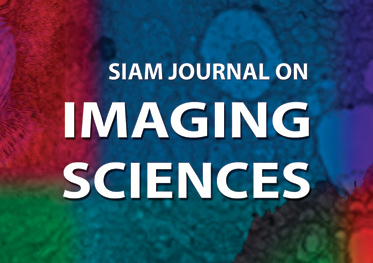- published
- 2016-04-20
- reference
- Joan Duran, Michael Moeller, Catalina Sbert, and Daniel Cremers, On the Implementation of Collaborative TV Regularization: Application to Cartoon+Texture Decomposition, Image Processing On Line, 6 (2016), pp. 27–74. https://doi.org/10.5201/ipol.2016.141
Communicated by Antonin Chambolle, Sandra Doucet
Demo edited by Jose-Luis Lisani

This IPOL article is related to a companion publication in the SIAM
Journal on Imaging Sciences:
J. Duran, M. Moeller, C. Sbert, and D. Cremers.
"Collaborative Total Variation: A General Framework for Vectorial TV Models"
SIAM Journal on Imaging Sciences 9(1):116-151, 2016.
http://dx.doi.org/10.1137/15M102873X
Abstract
This paper deals with the analysis, implementation, and comparison of several vector-valued total variation (TV) methods that extend the Rudin-Osher-Fatemi variational model to color images. By considering the discrete gradient of a multichannel image as a 3D structure matrix with dimensions corresponding to the spatial extend, the differences to other pixels and the color channels, we introduce in [J. Duran, M. Moeller, C. Sbert, and D. Cremers, 'Collaborative Total Variation: A General Framework for Vectorial TV Models', SIAM Journal on Imaging Sciences, 9(1), pp.116-151, 2016] collaborative sparsity enforcing norms for penalizing the resulting tensor. We call this class of regularizations collaborative total variation (CTV). We first analyze the denoising properties of each collaborative norm for suppressing color artifacts while preserving image features and aligning edges. We then describe the primal-dual hybrid gradient method for solving the minimization problem in detail. The resulting CTV–L2 variational model can successfully be applied to many image processing tasks. On the one hand, an extensive performance comparison of several collaborative norms for color image denoising is provided. On the other hand, we analyze the ability of different CTV methods for decomposing a multichannel image into a cartoon and a textural part. Finally, we also include a short discussion on alternative minimization methods and compare their computational efficiency.
Download
- full text manuscript: PDF low-res. (9M) PDF (72.6M) [?]
- source code: TGZ
History
- Note from the editor: the manuscript of the article was modified on 2022-01-01 to include information about its editors. The original version of the manuscript is available here.
 IPOL Journal · Image Processing On Line
IPOL Journal · Image Processing On Line



